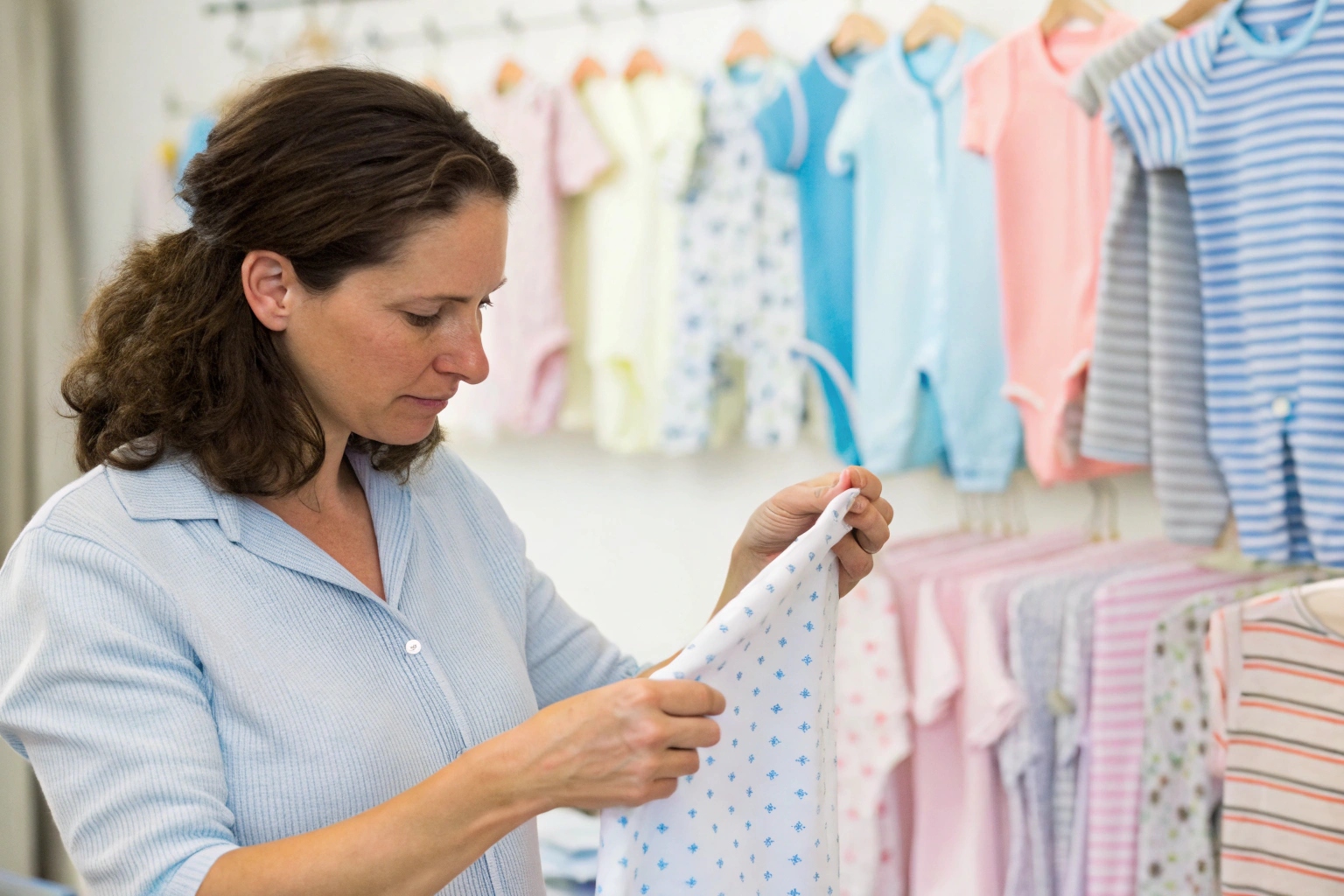Selecting fabric for infant clothing is more than a design decision—it’s a commitment to safety, comfort, and quality from the very first layer a baby wears.
To choose the right fabric for infant garments, focus on safety, softness, breathability, durability, and certifications that guarantee baby-skin compatibility.
This guide breaks down which fabrics work best, what parents expect, and how brands can ensure quality from the start.
What Fabrics Are Safest and Softest for Newborns?
Newborn skin is extremely sensitive—up to five times thinner than adult skin—and reacts quickly to harsh textures or chemical residues.
The safest and softest fabrics for infant garments include organic cotton, bamboo viscose, and OEKO-TEX® certified knits, all known for being hypoallergenic and chemical-free.
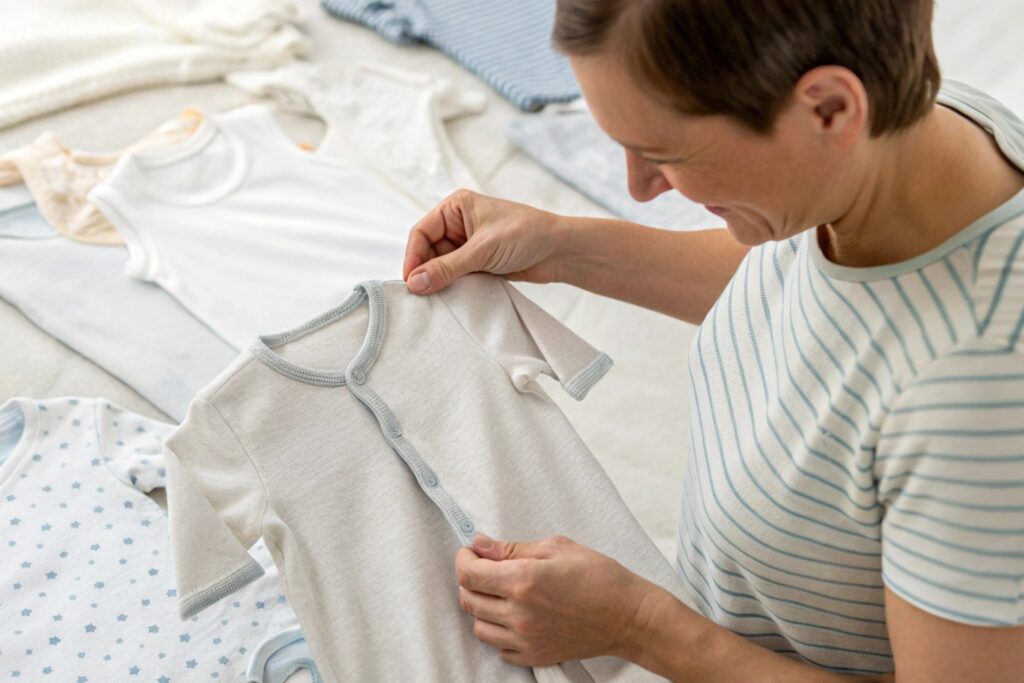
Recommended fabrics for newborn safety:
| Fabric Type | Safety Profile | Ideal Use |
|---|---|---|
| Organic Cotton | Pesticide-free, naturally soft | Bodysuits, onesies, pajamas |
| OEKO-TEX® Cotton | Tested for 100+ harmful substances | Daily wear, swaddles |
| Bamboo Viscose | Antibacterial, silky feel, biodegradable | Sleepwear, blankets, hats |
| Muslin (organic) | Breathable, lightweight, softens with washes | Swaddles, bibs, warm-weather garments |
| Modal (beechwood) | Smooth, stretchable, moisture-wicking | Leggings, infant tees |
Avoid:
- Polyester (can trap heat and moisture)
- Wool (can irritate or cause allergic reactions in newborns)
- Fabrics with metallics or glitter (choking and chemical risks)
At Fumao, we source only OEKO-TEX® or GOTS-certified materials for all infant garments to ensure safety and consistency.
How to Balance Comfort, Durability, and Breathability?
While comfort is key, parents also expect babywear to survive spills, drool, and countless washes without losing its shape or softness.
Choose fabrics that are breathable, moisture-absorbent, and stretch-resistant, while maintaining a soft feel and high-quality finish after repeated use.
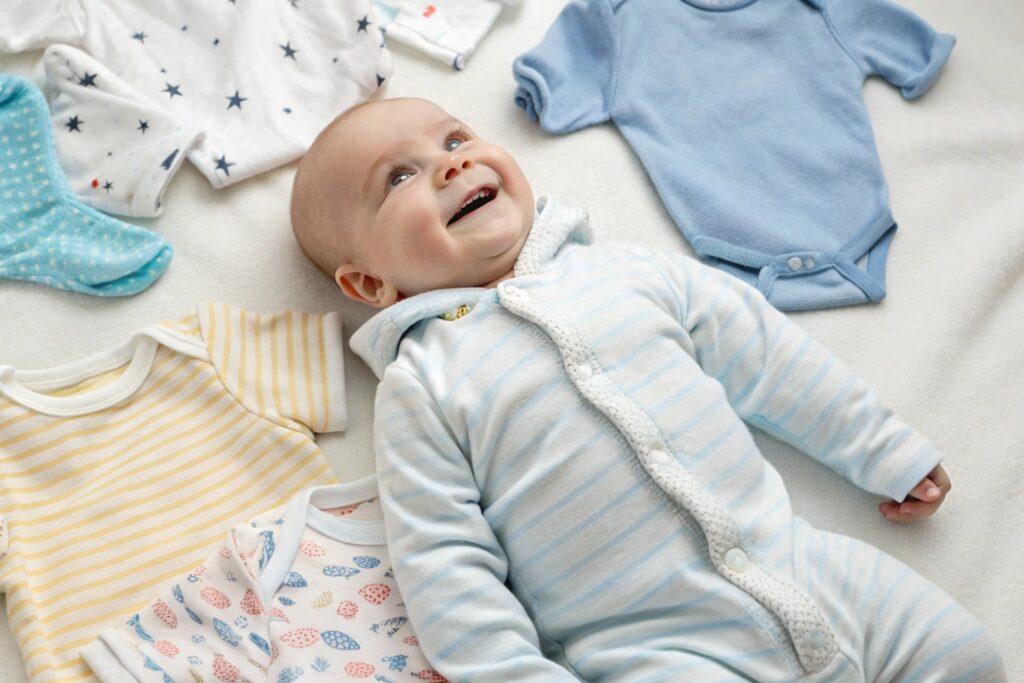
Key traits to balance when selecting infant fabric:
| Fabric Quality | What to Look For |
|---|---|
| Comfort | Smooth touch, low friction, tagless option |
| Durability | Shrink resistance, strong seams, pill-free |
| Breathability | Air flow, open weave, prevents overheating |
| Moisture Control | Quick drying, absorbent, prevents rashes |
| Wash Performance | Shape retention, colorfastness, low shrink |
A good benchmark: the fabric should stay 80% as soft and intact after 10 washes as it did new.
We recommend cotton jersey (160–180 GSM) for onesies and rib knit (with slight spandex) for stretchwear like leggings and bodysuits.
Why Organic and Hypoallergenic Materials Matter?
Parents—especially first-timers—are more informed than ever about fabric safety and environmental impact. Certifications prove what softness alone can’t.
Organic and hypoallergenic materials matter because they reduce the risk of skin irritation, allergic reactions, and long-term exposure to toxins.
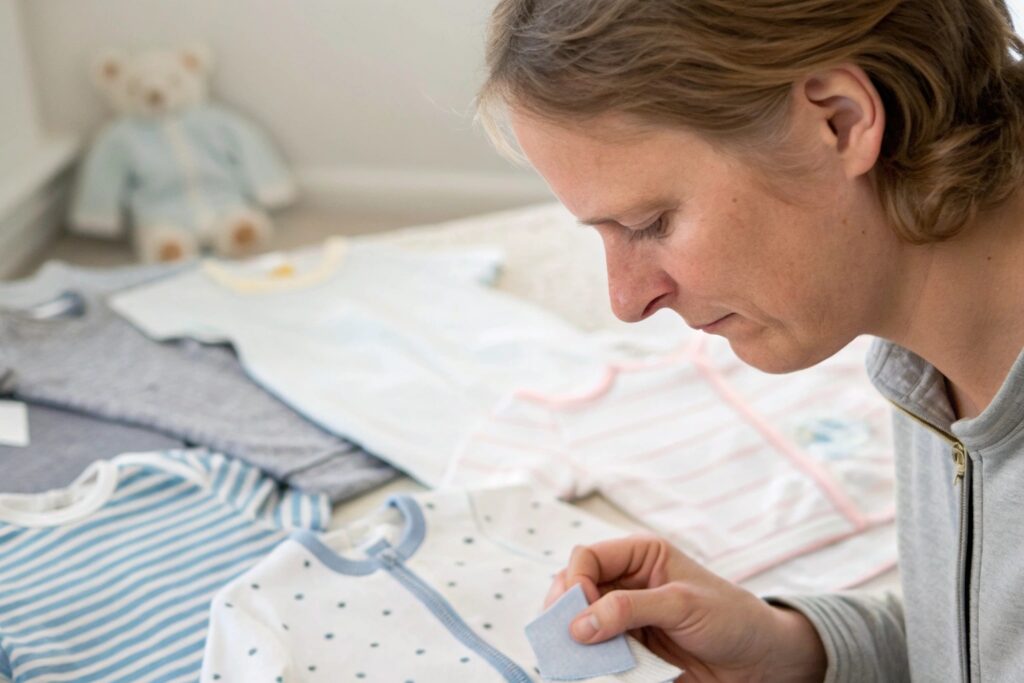
What makes a fabric “baby-safe”?
| Factor | Benefit for Babies |
|---|---|
| No pesticide residue | Protects sensitive, absorbent skin |
| Hypoallergenic properties | Low risk of allergic reactions |
| Breathable fiber structure | Prevents sweat buildup and rashes |
| Certified chemical-free | No formaldehyde, azo dyes, or phthalates |
Top certifications that back these claims:
- GOTS (Global Organic Textile Standard)
- OEKO-TEX® Standard 100
- CPSIA compliance (for U.S. market entry)
Fabrics with these certifications give both brands and parents peace of mind—and improve retail acceptance in the U.S., U.K., and EU.
Tips for Testing Fabric Quality Before Production?
Even with certifications and great samples, it’s essential to test the fabric before committing to large-scale production.
Before production, test for softness, shrinkage, pilling, colorfastness, and overall babywear performance—ideally over multiple wash cycles.
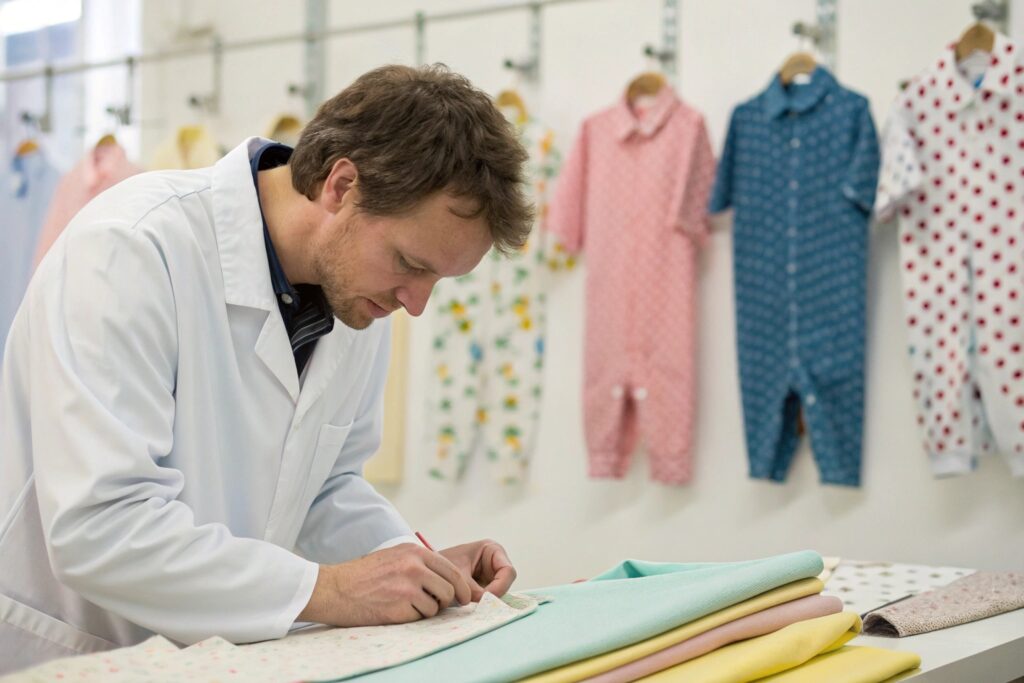
Easy in-house tests before placing an order:
| Test | How to Perform |
|---|---|
| Stretch + recovery | Stretch 20%, check if it bounces back |
| Pilling resistance | Rub two fabric swatches together 50 times |
| Shrinkage check | Wash and measure before/after (aim <5%) |
| Colorfastness | Rub a damp white cloth to test dye bleed |
| Softness after wash | Compare feel pre- and post-wash (3 cycles) |
We also recommend:
- Reviewing lab test results (SGS, TÜV, Intertek)
- Checking for batch consistency across rolls
- Asking for babywear-specific QC reports if available
At Fumao, we run shrinkage and pH level tests for all new fabrics and share performance data with clients before cutting samples.
Conclusion
Choosing the right fabric for infant garments means balancing softness, safety, breathability, and long-term durability. With certified organic or OEKO-TEX® materials, plus proper testing, brands can confidently deliver comfort and protection—right from the first wear.

